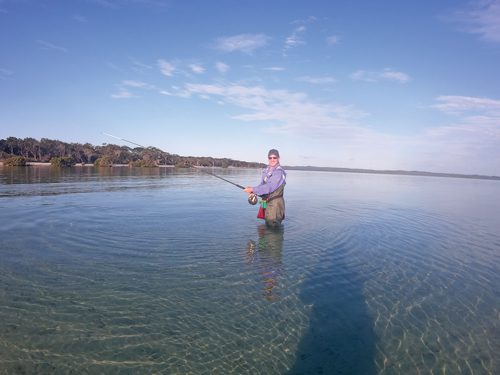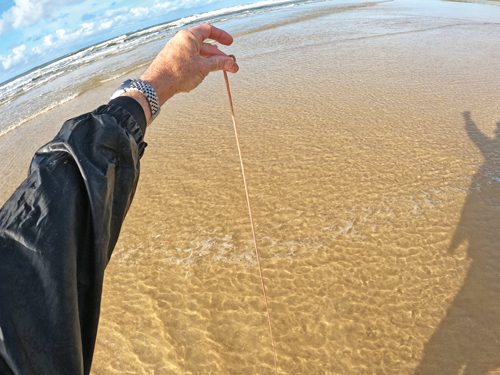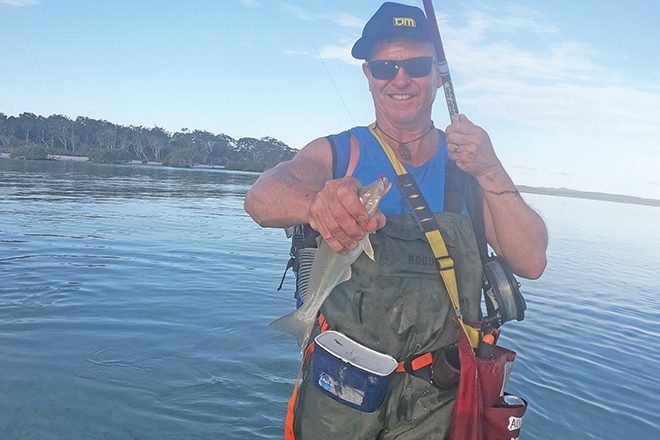While springtime is associated with flotillas of boats chasing flathead in and around the southern Moreton Bay islands and Broadwater, much less attention is given to chasing fish such as flathead and whiting on foot in spring.
Even when it comes to fishing charter operators – with a couple of exceptions such as fellow scribes Clint Ansell and Ross McCubbin – few offer charter clients shore-based options, at least in southeast Queensland.
This is a shame, because I think the challenge of targeting fish wading the flats on foot is that bit more special.
When wading, your senses are heightened – feeling the subtle temperature changes on your legs, seeing and hearing any slight movements or variation in bottom structure up close – and, of course, it is damn relaxing!

Springtime targets
Flathead aren’t the only likely target on the flats of southeast Queensland over spring.
Summer whiting, bream, trevally, grunter, flounder and even species associated more with reef fishing such as cod, grunter and snapper are possible, if your flats are located near a ledge or nearby reef structure.
The two main ways I successfully target the flats are by using soft plastics and bait.
This month, I will focus on wading the flats with bait – whiting being the main target species.
Bait fishing the flats
There are two types of bait that are first-class to fish the flats with – and I wouldn’t fish without them. These can be categorised into live worms and yabbies.
When it comes to live worms, these can be anything from squirt worms to rock wrigglers to blood or beachworms.
Each works well, with blood and squirt worms generally doing better the further up an estuary you might go, as they are a more natural bait.
For me, two of the easiest bait to gather are beachworms and yabbies. So I tend to take both because at times fish might have a preference for one over the other.
If you don’t have one, invest in a stainless-steel yabby pump. It will pay for itself many times over with fresh live bait.
Likewise, if you can’t catch beachworms, check out the series of videos on my Ontour Fishing Australia Facebook page – a few are on there showing how to catch beachworms.

Best times
A key thing to remember on the flats is the general rule – the more run, the more fun with whiting.
Generally, this means whiting bite best during the bigger spring tide periods associated with the four days or so leading up to and after full and new moons.
It also means there is more water movement and with it, whiting following the tide during the mid-stages when there is a faster run.
 Bush ‘n Beach Fishing Magazine Location reports & tips for fishing, boating, camping, kayaking, 4WDing in Queensland and Northern NSW
Bush ‘n Beach Fishing Magazine Location reports & tips for fishing, boating, camping, kayaking, 4WDing in Queensland and Northern NSW









